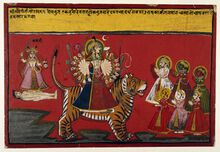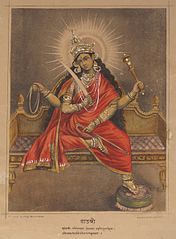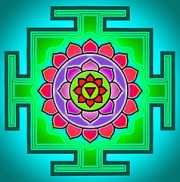Matangi: Unterschied zwischen den Versionen
Adm1 (Diskussion | Beiträge) |
Adm1 (Diskussion | Beiträge) |
||
| Zeile 19: | Zeile 19: | ||
== Literatur == | == Literatur == | ||
*Kinsley, David R. (1997). Tantric visions of the divine feminine: the ten mahāvidyās. University of California Press; ISBN 978-0-520-20499-7. Kap. 11 : S. 161 -177 | |||
*Kinsley, David R. (1997). Tantric visions of the divine feminine: the ten mahāvidyās. University of California Press; ISBN 978-0-520-20499-7. | |||
* Frawley, David (1994–2003). "Matangi: The Utterance of the Divine Word". Tantric Yoga and the Wisdom Goddesses: Spiritual Secrets of Ayurveda. Lotus Press; ISBN 978-0-910261-39-5. | * Frawley, David (1994–2003). "Matangi: The Utterance of the Divine Word". Tantric Yoga and the Wisdom Goddesses: Spiritual Secrets of Ayurveda. Lotus Press; ISBN 978-0-910261-39-5. | ||
== Weblinks == | == Weblinks == | ||
* en Wiki über [//en.wikipedia.org/wiki/Matangi Matangi] | * en Wiki über [//en.wikipedia.org/wiki/Matangi Matangi] | ||
Version vom 12. November 2016, 14:45 Uhr
Die Devi Matangi wird zu den Mahavidyas gezählt. Sie gilt als furchtbarer Kali - Aspekt der Devi und wird auch als tantrische Form von Sarasvati angesehen. Daher wird sie im Sri Vidya verehrt. Sie wird besonders mit übernatürlichen Kräften in Verbindung gebracht.
Das Shaktisamgama-Tantra beschreibt die Geburt einer Ucchishta-matangini.
Sie wird auch im Kapitel 8 der Bahvricha Upanishad erwähnt.
Die freundliche Form Raja Matangi bzw. Raja Matangini wird ähnlich wie Sarasvati mit Vina und oft auch mit einem Papagei abgebildet. Raja Matangi symbolisiert höheres Wissen und Intuition. Ähnlich wie Sarasvati wird sie mit Kunst, Musik, Malerei, und Dichtung in Verbindung gebracht.
Das Dhyana Mantra des Brihat Tantrasara beschreibt ihre populäre der Göttin Kali ähnelnde Form Ucchishta-Matangini.
Die Dhyana Mantras im Purashcharyarnava und im Tantrasara beschreiben Matangi als blau mit einem leuchtenden Mond an der Stirn.
Sadhana
Ein Mantra ist Aim, Aum Hring Kling Hum Matangaiye Phat Swaha.
Literatur
- Kinsley, David R. (1997). Tantric visions of the divine feminine: the ten mahāvidyās. University of California Press; ISBN 978-0-520-20499-7. Kap. 11 : S. 161 -177
- Frawley, David (1994–2003). "Matangi: The Utterance of the Divine Word". Tantric Yoga and the Wisdom Goddesses: Spiritual Secrets of Ayurveda. Lotus Press; ISBN 978-0-910261-39-5.
Weblinks
- en Wiki über Matangi


